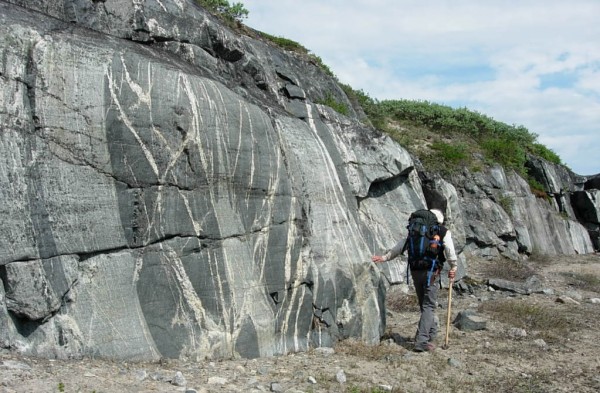By Ana Verayo, | March 22, 2017

Archean-eon craton were found in the area of the Nuvvuagittuq greenstone belt in northern Quebec.
Scientists have uncovered remnants of the Earth's crust, which is also the oldest one, dating back to 4.2 billion years ago in Canada, during a time when the planet was still so young. Our planet is considered as a rocky planet with crusts moving and forming, covering the entire surface. For millions of years, older crusts found deep below the ocean and continental ones were replaced by layers of newly formed crust.
Like Us on Facebook
Today, the oldest crust is estimated to be 2.7 billion years old where some of it remains in the Canadian Shield. However, the planet's older crust from 4.6 billion years ago has not been detected until now.
In this new study, led by Jonathan O'Neil from the Department of Earth and Environmental Sciences at the University of Ottawa, his team found new evidence of this original crust after collecting samples during an expedition to the Shield, located in north Quebec.
The primary goal of the researchers is to trace back the parentage of these rocks and most of the time, this becomes nearly impossible or elusive. Now, the team has identified how these rocks first formed along with its composition. O'Neil reveals that it is mostly granite originating from an older crust melting into it. He adds, we knew how these rocks had an older precursor or an older parent but we have yet to determine its age.
Scientists have measured the isotope that was produced by the Earth's crust when the planet was just 500 million years old. The isotope, neodymium-142 was detected in samples obtained from Quebec. This also also suggests that these samples formed around 4.2 to 4.3 billion years ago.
These new findings provide crucial evidence about questions that loom about the early evolution of Earth, providing more information about its development. O'Neil explains, this gives us more tools to further understand the early geodynamics of Earth and if this is local or happening all over the world. He adds, if we can understand the early processes that took place that shaped our planet, then we can also understand other planets and what makes them different or similar to Earth.
This new study is published in the journal Science.
-
Use of Coronavirus Pandemic Drones Raises Privacy Concerns: Drones Spread Fear, Local Officials Say

-
Coronavirus Hampers The Delivery Of Lockheed Martin F-35 Stealth Fighters For 2020

-
Instagram Speeds Up Plans to Add Account Memorialization Feature Due to COVID-19 Deaths

-
NASA: Perseverance Plans to Bring 'Mars Rock' to Earth in 2031

-
600 Dead And 3,000 In The Hospital as Iranians Believed Drinking High-Concentrations of Alcohol Can Cure The Coronavirus

-
600 Dead And 3,000 In The Hospital as Iranians Believed Drinking High-Concentrations of Alcohol Can Cure The Coronavirus

-
COVID-19: Doctors, Nurses Use Virtual Reality to Learn New Skills in Treating Coronavirus Patients







